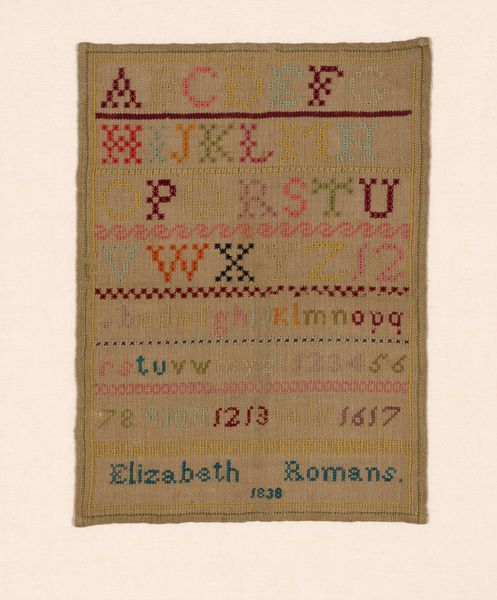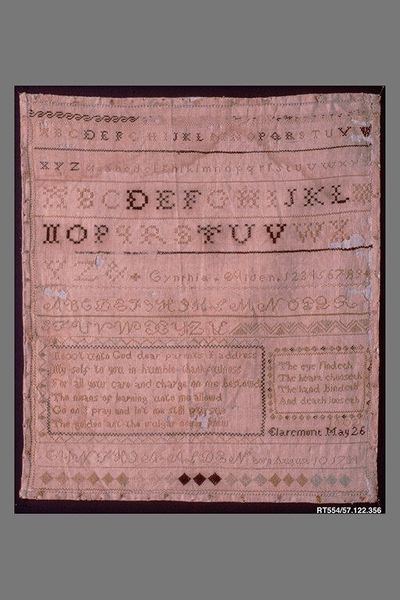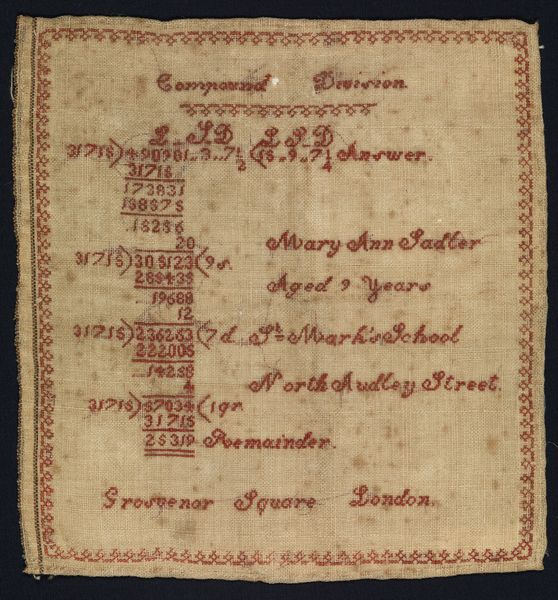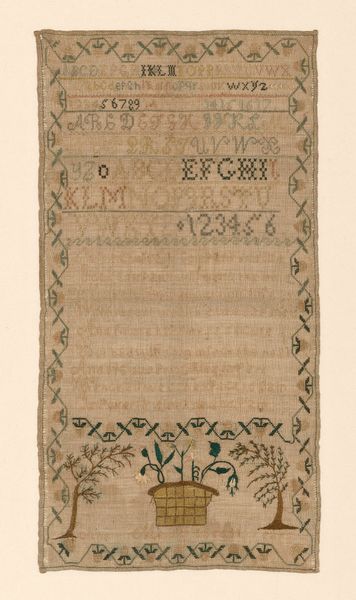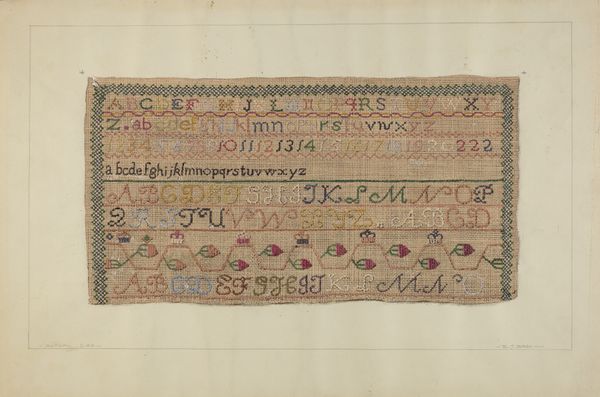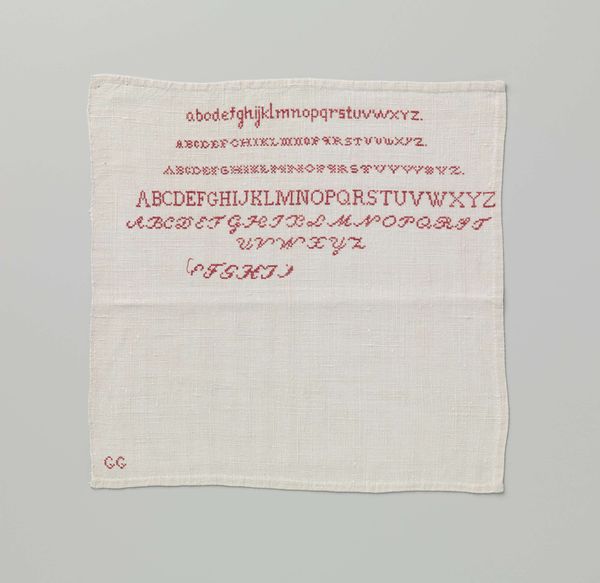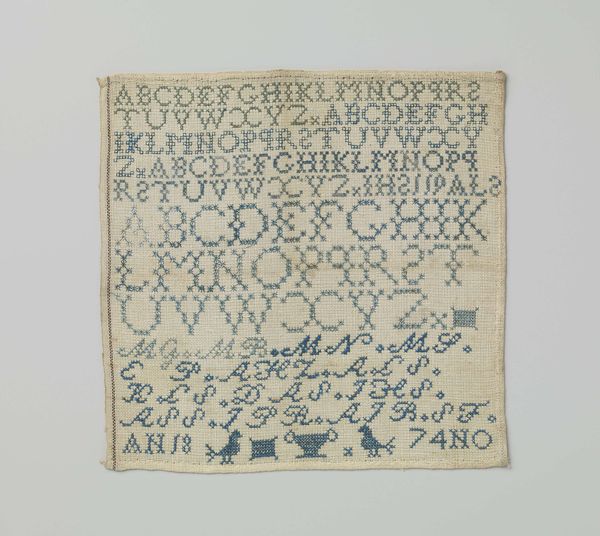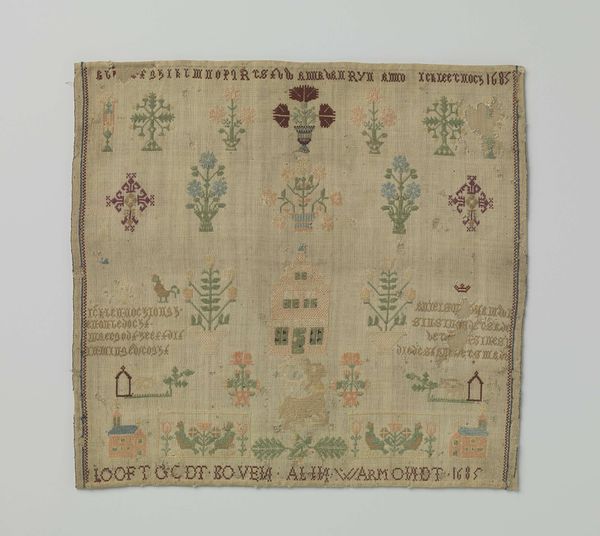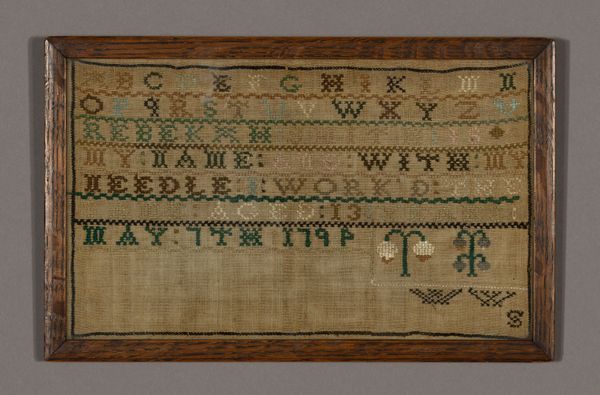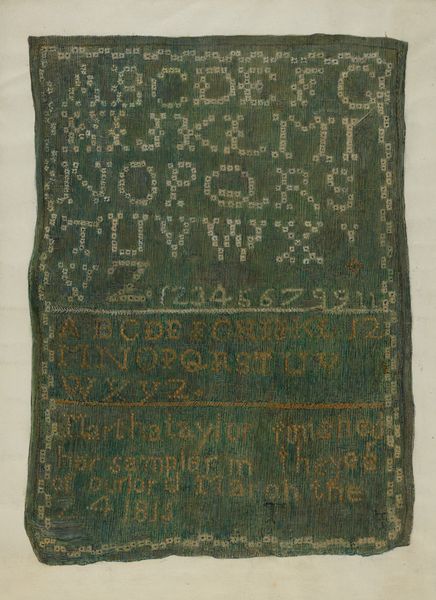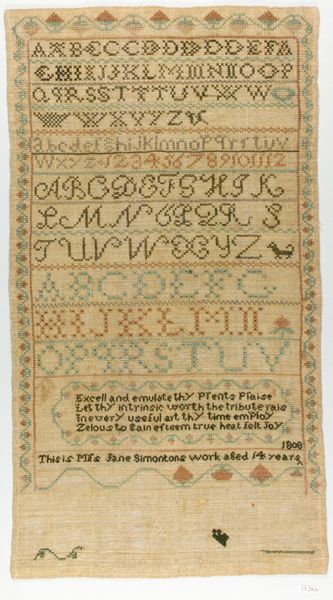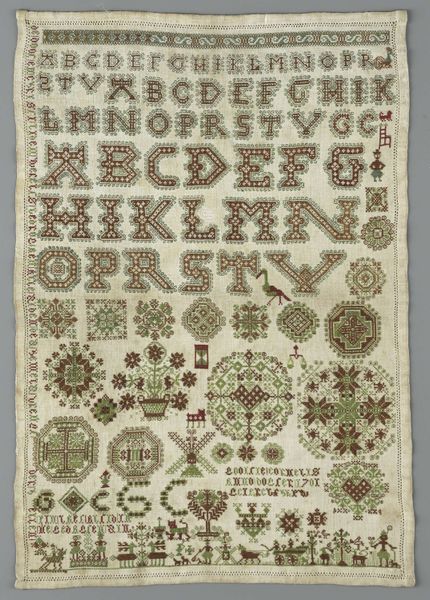
drawing, textile
#
drawing
#
pattern
#
textile
#
folk-art
#
united-states
#
textile design
#
miniature
Dimensions: 16 x 10 in. (40.6 x 25.4 cm)
Copyright: Public Domain
Editor: This is an embroidered sampler by Mary Duyber, created in 1792. It's made with textile and drawing, which creates an earthy mood and quaint, personal quality that’s so distinct. What strikes you most about it? Curator: It's fascinating to consider the social context of this piece. Samplers like these weren’t simply decorative; they served as a tangible demonstration of a young woman's needlework skills and literacy, crucial components of her education and marriage prospects in the late 18th century. Do you see any visual cues that suggest this piece’s function in shaping a young woman’s social identity? Editor: Well, I notice the neat rows of alphabets and the simple text. Was it a rote exercise then, more about skill than expression? Curator: Exactly. Think about the institutions involved: schools, families, and religious organizations all reinforced these skills. The sampler becomes a public assertion, almost like a resumé of virtue and competence. The choice of motifs, the very act of stitching, were all shaped by societal expectations and contributed to the formation of gender roles. Does knowing this affect your initial impression of it? Editor: Definitely! I thought of it as simply 'folksy,' but understanding its function, it gains a layer of complexity. It’s like a quiet declaration of self within very strict boundaries. Curator: Precisely. These boundaries are the historical context shaping artistic creation. It is interesting how powerful these “small” assertions become when we contextualize this creation. Editor: I’ll certainly view these kinds of folk art objects differently now. The social dimension gives new meaning. Curator: Yes. Recognizing the web of societal factors can change how we see these artworks.
Comments
No comments
Be the first to comment and join the conversation on the ultimate creative platform.
